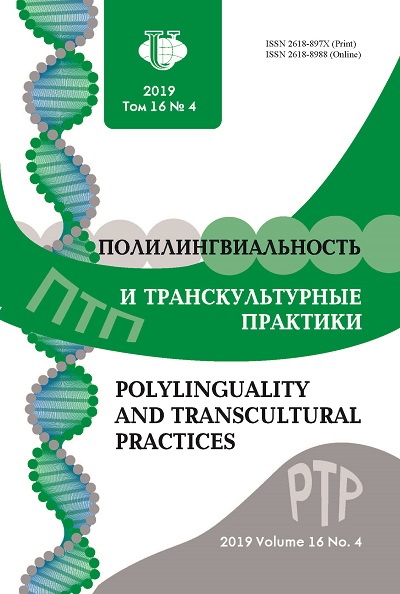Discourse Marker well and Functional Approach to its Translation into Russian in Film Subtitling and Dubbing
- Authors: Bliudneva A.A.1
-
Affiliations:
- Lomonosov Moscow State University
- Issue: Vol 16, No 4 (2019)
- Pages: 504-514
- Section: THEORY AND PRACTICE OF TRANSLATION
- URL: https://journals.rudn.ru/polylinguality/article/view/22551
- DOI: https://doi.org/10.22363/2618-897X-2019-16-4-504-514
Cite item
Full Text
Abstract
The article is concerned with pragmatic functions of the discourse marker well in film dialogues and the means of its functional translation into Russian in subtitles and dubbing. A number of linguistic and extralinguistic parameters are used for a thorough contextual analysis of each occurrence of well in 11 feature films made between 1997 and 2017. The analysis results in identifying the following textual: floor-gaining, arranging topic shifts, indicating dialogue frames, contraposition, justification, clarification, repair and quotation - and interpersonal functions of well: prompting, hesitation, evasion, emphasis and humility. The article continues with a qualitative and quantitative account of translation decisions for the discourse marker well in subtitles and dubbing. For every textual and interpersonal function of well, we establish functional equivalents and assess the proportion of marker omission and the proportion of functional losses. Finally, the subtitled and dubbed versions are compared in terms of the proportion of marker omission and the proportion of functional losses. The conclusion is drawn on the apparent correlation between the degree of functional equivalence achieved in translation of well, on the one hand, and technical and textual constraints of both subtitling and dubbing, on the other.
About the authors
Aleksandra A. Bliudneva
Lomonosov Moscow State University
Author for correspondence.
Email: aleksandra.bliudneva@gmail.com
SPIN-code: 7498-6368
Postgraduate student with Foreign Languages Teaching Department, Faculty of Foreign Languages and Area Studies
1, Leninskie gory, Moscow, 119991, Russian FederationReferences
- Viktorova, E.Yu. 2016. Vspomogatelnaya sistema diskursa: problema vydeleniya i spetsifiki funktsionirovaniya. PhD diss. Saratov State University. Print. (In Russ.)
- Mattsson, J. 2009. The Subtitling of Discourse Particles: A Corpus-based Study of well, you know, I mean, and like, and their Swedish Translations in ten American films. PhD diss. University of Gothenburg. URL: https://gupea.ub.gu.se/bitstream/2077/21007/1/ gupea_2077_21007_1.pdf (date: 14.03.2017).
- Furko, B.P. 2014. “Perspectives on the Translation of Discourse Markers: A Case Study of the Translation of Reformulation Markers from English into Hungarian”. Acta Universitatis Sapientiae, Philologica 6 (2): 181—196. URL: https://doi.org/10.1515/ausp-2015-0013.
- Minchenkov, A.G. 2001. Russkiye chastitsy v perevode na angliyskiy yazyk [Translation of Russian Particles into English]. Saint Petersburg: OOO Publishing House “Khimera”. Print. (In Russ.)
- Minchenkov A.G. 2004. Angliyskiye chastitsy: funktsii i perevod [English particles: functions and translation]. Saint Petersburg: Antologiya. Print. (In Russ.)
- Brinton, L.J. 2017. The Evolution of Pragmatic Markers in English: Pathways of Change. Cambridge: Cambridge University Press. Print.
- Cuenca, M.-J. 2008. “Pragmatic Markers in Contrast: The Case of well”. Journal of Pragmatics 40 (8): 1373—1391. URL: https://doi.org/10.1016/j.pragma.2008.02.013
- Gottlieb, H. 2005. Screen Translation: Eight Studies in Subtitling, Dubbing and Voice-over. Copenhagen: University of Copenhagen. Print.
- Diaz Cintas, J. and G. Anderman. 2009. Audiovisual Translation: Language Transfer on Screen. London: Palgrave Macmillan. Print.
- Tveit, J.-E. 2009. Dubbing versus Subtitling: Old Battleground Revisited. In J. Diaz Cintas and G. Anderman (eds.) Audiovisual Translation: Language Transfer on Screen. London: Palgrave Macmillan. Print.















